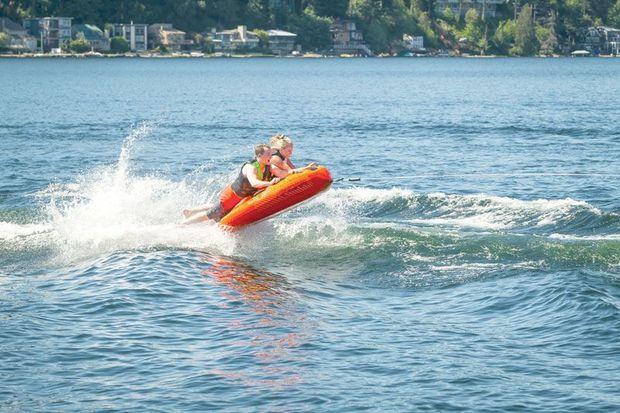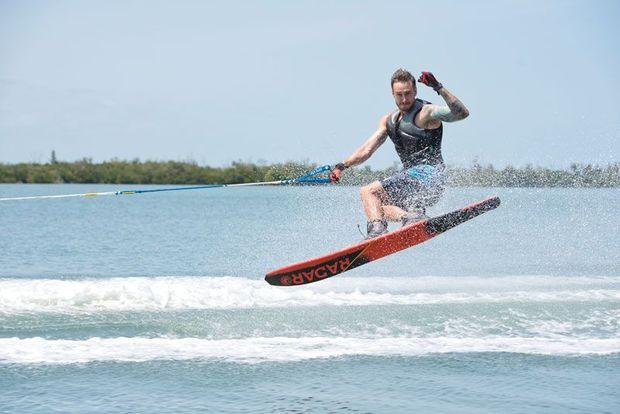Whether we crave the thrill of aerial tricks, the joy of zipping kids on a tube, or the full-body workout of a stand-up-paddleboard sessions,
watersports enthusiasts know playing on the water is wet and wonderful. No matter what speed you choose, here's what you need to know for water fun this summer.
https://youtu.be/iq8nXHdRheM
Basic Towing Hand Signals
Courtesy MD DNR
- Speed up the boat: thumb up
- Slow down the boat: thumb down
- Cut motor/stop: slashing motion over neck
- Turn the boat: circle motion with arms overhead then point in desired direction
- Return to dock: pat on head
- Speed and boat path OK/signals understood: OK signal with hand (thumb and index finger touching, other three fingers up)
- Skier OK after falling: hands clasped over head

Vessel Operators Towing a Person(s) on Water-Skis or Similar Device Must Obey These Maryland Laws:
- No one under 12 years of age may legally operate a vessel towing a person(s) on water-skis, or any other device.
- Every vessel towing a person(s) on water-skis, or any other device must have on board, in addition to the operator, an observer at least 12 years of age.
- All persons being towed behind a vessel on waterskis or any other device must wear a USCG approved type I, II, or III, life jacket.
- A vessel may tow a person(s) on water-skis or any other device only between the hours of sunrise to sunset.
- It is illegal to operate any vessel, or manipulate any water-skis or any similar device in a careless, reckless, or negligent manner that endangers the life, limb, or property of any person.
- Except for taking off from shore, the towing vessel must stay at least 100 feet from shore, piers, bridges, people in the water, or other vessels.
- Ski ropes may not be more than 75 feet in length, except when barefoot skiing, in which case a ski rope of 100 feet in length may be used.
- A PWC may not be used to tow a person on water-skis or any other device unless the PWC has the capacity to carry at least three (3) persons – the operator, a rear-facing observer that is at least 12 years of age, and the skier.

Before Towing a Skier (or similar device), the Operator Should:
- Review hand signals with the skier to ensure proper communications.
- Make sure the skier is wearing a USCG approved life jacket.
- Make sure the tow lines are of the same length if towing multiple skiers.
- Be familiar with the area and aware of any hazards such as shallow water, rocks, or bridge pilings in the water.
- Choose a safe location and know that water-skiing should never be attempted in swimming areas, low-speed mooring lanes, or marina channels.
- Operate in an area at least 200 feet wide, giving a safety area of 100 feet on either side of the boat. A corridor length of 2,000 to 3,000 feet is desirable.
- Remember to keep the boat a safe distance from the shore, docks, and other objects in the water. You are responsible for your wake!
- Never ski at night! It is both hazardous and illegal.



